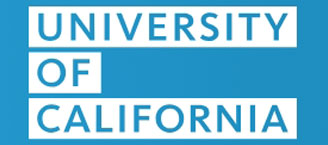Auristatin E is a synthetic analog of dolastatin 10. Auristatin E is a highly potent antimitotic agent.Auristatin E inhibits tubulin polymerization. Auristatin E is a cytotoxic tubulin modifier with potent and selective antitumor activity.

Structure of 160800-57-7
* For research and manufacturing use only. We do not sell to patients.
| Size | Price | Stock | Quantity |
|---|---|---|---|
| 5 mg | $939 | In stock |
Looking for different specifications? Click to request a custom quote!
Capabilities & Facilities













 Popular Publications Citing BOC Sciences Products
Popular Publications Citing BOC Sciences Products
| NCT Number | Condition Or Disease | Phase | Start Date | Sponsor | Status |
|---|---|---|---|---|---|
| NCT00649584 | Disease, Hodgkin | Phase 1 | 2014-12-18 | Seagen Inc. | Terminated (Sponsor decision not to enroll cohorts of combined SGN-35 and gemcitabine therapy.) |
| NCT01925612 | Lymphoma, B-cell | Phase 2 | 2018-06-21 | Seagen Inc. | Terminated (Sponsor decision based on portfolio prioritization and changing treatment landscape in frontline DLBCL) |
| NCT01990534 | Hodgkin Lymphoma | Phase 4 | 2021-04-09 | Millennium Pharmaceuticals, Inc. | Completed |
| NCT01777152 | Anaplastic Large-Cell Lymphoma | Phase 3 | 2021-03-22 | Seagen Inc. | Completed |
| NCT01461538 | Acute Lymphoid Leukemia | Phase 2 | 2016-03-04 | Seagen Inc. | Completed |
Auristatin E, also known as Monomethyl Auristatin E (MMAE), is a synthetic antineoplastic agent derived from dolastatin 10 and one of the most widely used ADC cytotoxins in the field of antibody-drug conjugates. As a potent ADC payload, MMAE functions by binding to tubulin and inhibiting microtubule assembly, thereby disrupting mitotic spindle formation. This mechanism results in cell cycle arrest and apoptosis in rapidly dividing tumor cells, making MMAE a powerful tool in targeted oncology therapeutics.
Within antibody-drug conjugates, MMAE is typically attached to monoclonal antibodies via cleavable linkers, such as valine-citrulline dipeptide linkers. These linkers are stable in systemic circulation but are efficiently cleaved by lysosomal proteases once the ADC is internalized into tumor cells. This strategy ensures tumor-selective delivery of the cytotoxic agent, maximizing antitumor efficacy while reducing systemic toxicity. The bystander effect of MMAE, resulting from its membrane permeability, can enhance therapeutic outcomes by affecting neighboring tumor cells not directly bound by the antibody.
Applications of Auristatin E (MMAE) include its successful integration into multiple FDA-approved antibody-drug conjugates, most notably brentuximab vedotin (Adcetris®), which targets CD30-positive lymphomas. It is also utilized in numerous clinical-stage ADC candidates targeting a wide range of antigens, including CD79b, Nectin-4, and tissue factor. The strong antimitotic activity, established safety profile in ADC constructs, and broad applicability across hematologic malignancies and solid tumors highlight MMAE as one of the most versatile and clinically validated ADC payloads in oncology drug development.
What is Auristatin E?
Auristatin E is a potent microtubule-disrupting cytotoxin utilized in ADC research. It binds tubulin, inhibiting polymerization and triggering apoptosis in targeted cells, making it suitable for experimental targeted therapy studies.
10/12/2022
Dear BOC Sciences, how is Auristatin E employed in ADCs?
In ADCs, Auristatin E acts as the payload, selectively delivered to target cells. Upon internalization and release, it disrupts microtubules, arresting the cell cycle and inducing programmed cell death, which is critical for ADC efficacy studies.
25/12/2021
Dear Sir, which linkers are typically used with Auristatin E?
Auristatin E is compatible with both cleavable and non-cleavable linkers, including peptide-based or thioether linkers. Linker selection impacts the rate of intracellular drug release and overall ADC stability.
12/9/2018
Could you confirm whether BOC Sciences provides custom Auristatin E ADC services?
BOC Sciences provides custom conjugation services for Auristatin E, including selection of optimal linkers, controlled conjugation, and quality control, supporting research and preclinical ADC development.
8/8/2019
Dear team, how should Auristatin E be handled for research purposes?
Auristatin E should be stored under recommended conditions such as low temperature and light protection. Handling guidelines provided by BOC Sciences ensure safety and maintain its bioactivity for conjugation studies.
25/8/2016
— Dr. Kevin Wallace, Senior Scientist (USA)
Auristatin E arrived with exceptional purity, supporting our ADC conjugation work seamlessly.
12/9/2018
— Dr. Emma Collins, ADC Researcher (UK)
Batch-to-batch consistency was impressive. Technical support answered all our questions promptly.
25/8/2016
— Dr. Hans Bauer, Medicinal Chemist (Germany)
Excellent documentation and fast delivery. Auristatin E enabled smooth cytotoxicity studies.
8/8/2019
— Dr. Laura King, Biochemist (Canada)
Reliable supply and responsive support. Auristatin E facilitated our ADC projects efficiently.
10/12/2022
— Dr. Richard Moore, Lead Scientist (USA)
High-quality compound and detailed QC reports. Perfect for our pipeline.
— Dr. Camille Bernard, Research Scientist (France)
Consistent and reliable product. Auristatin E is essential for our ADC development.
25/12/2021
Contact our experts today for pricing and comprehensive details on our ADC offerings.
From cytotoxin synthesis to linker design, discover our specialized services that complement your ADC projects.
Learn more about payload design, linker strategies, and integrated CDMO support through our curated ADC content.
Find exactly what your project needs from our expanded range of ADCs, offering flexible options to fit your timelines and goals.











